 The short par 3, seventh hole on The West Course at Royal Melbourne
The short par 3, seventh hole on The West Course at Royal Melbourne
Royal Melbourne Golf Club is the pre-eminent golf club in Australia, and one of the most prestigious in the world.
The club has two courses- The West Course (rated best course in Australia), and The East Course (top 10 in Australia).
The West Course has long been regarded as one of the top ten courses in the world.
A 'Composite' course comprising many of the best holes from each course was introduced in 1959 for The World Cup.
Since then the Composite course has been used regularly for championship events, although the combination of holes changes from time to time.
Although the club was founded in 1891, it did not move to its existing site in Black Rock until the mid 1920's.
Legendary architect Dr Alister McKenzie was appointed and during his whirlwind 1926 trip to Australia he designed the West Course, and then left local professional Alex Russell, and course superintendant Mick Morcom to build it.
They clearly were up to the task, and the course opened in 1931 and has been regarded as the best in Australia ever since.
McKenzie went on to become the doyen of golf course architects, and was instrumental in the designing of both Augusta and Cypress Point Golf Clubs- both of which are generally regarded as one of the top 3 or 4 courses in the world.
In his 1920 book 'Golf Architecture', McKenzie wrote about the 13 basic principles that should be incorporated into good golf course design. The West Course at Royal Melbourne holds true to these principles.
Fairways are wide giving all level of player the chance to keep his ball in play off the tee.
However the large and artfully contoured greens are orientated in such a way as to reward an approach from the correct angle, and penalise a player coming from the wrong angle with a more difficult shot.
The greens at Royal Melbourne are firm and fast and as true as any on the planet.
In the middle of a Melbourne summer with a north wind blowing it can be quite a task to stop a wedge shot on these greens!
The West Course
There is no water on the course, and the majestic McKenzie bunkering dominates- framing fairways, and defining the green complexes.
During his visit in 1926 McKenzie also visited a number of other courses in Melbourne ( Kingston Heath, Victoria...), and his bunkering on these courses evolved into an instantly recognisable Melbourne Sandbelt style.
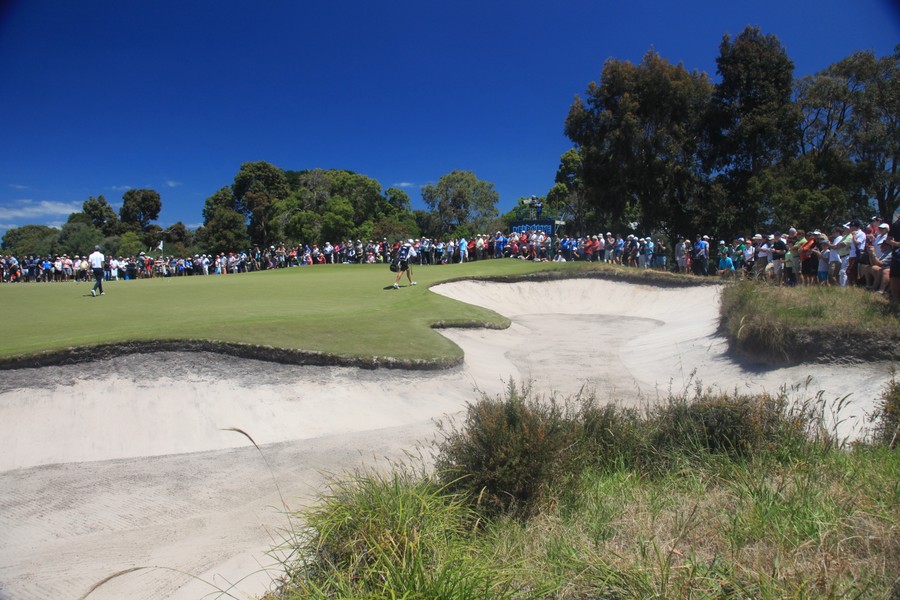 The classic bunkering at Royal Melbourne
The classic bunkering at Royal Melbourne
There are no weak holes on The West Course, but some that I regard as 'all world' holes.
The run of holes from four to seven is as good as it gets anywhere, and I just love the short, driveable par 4 tenth hole.
The fourth hole is a short par 5 with a scary blind tee shot over a rise with deep yawning bunkers set into the face of the dune.
A successful tee shot will open up the possibility of reaching the green in two- but bunkers and bracken await the mishit shot.
The large green is well contoured and it may well be that one should consider leaving an approach under the hole.
The par 3 fifth hole is one of the most picturesque on the course.
The mid iron tee shot must carry over a deep gully in front of the two tiered and sharply contoured green.
The green is framed by deep bunkering on both sides. From the tee a player may well sigh a breath of relief if he successfully avoids the gully short, and bunkers left and right, and makes it to the top tier.
But any shot a little long can be penalised with a downhill putt or chip that will be hard to stop....
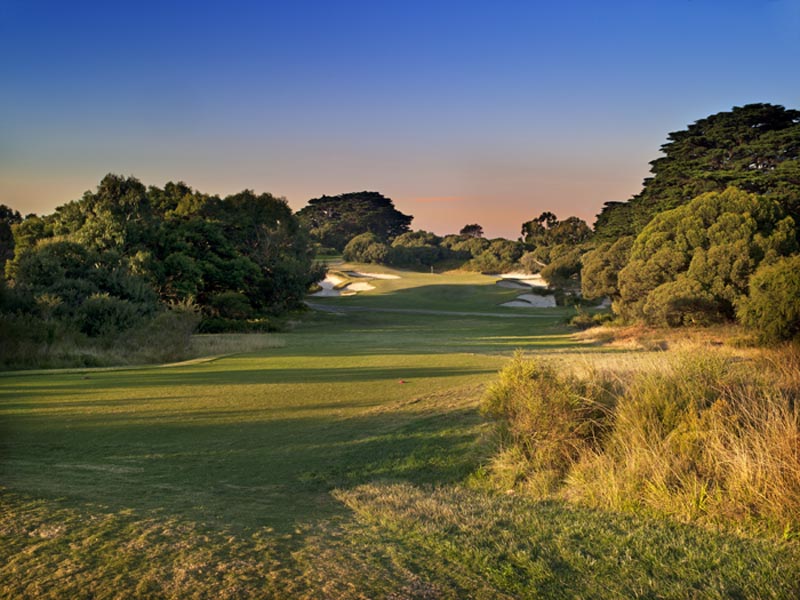 Royal Melbourne West Course Hole 5
Royal Melbourne West Course Hole 5
Hole six is a longer par four, left to right dogleg.
The longer hitter can easily carry the bracken on the inside of the dogleg and set up a short iron approach, but he must be careful not to overhit and run through the fairway.
Depending on the wind and tee of the day many will be capable of taking the shortcut and many will fail- losing a ball in the bracken, or being blocked out by the trees right.
The conservative tee shot left will leave a golfer with a long shot in to a raised green with significant back to front camber, and those trademark bunkers in front.
This really is a classic hole!
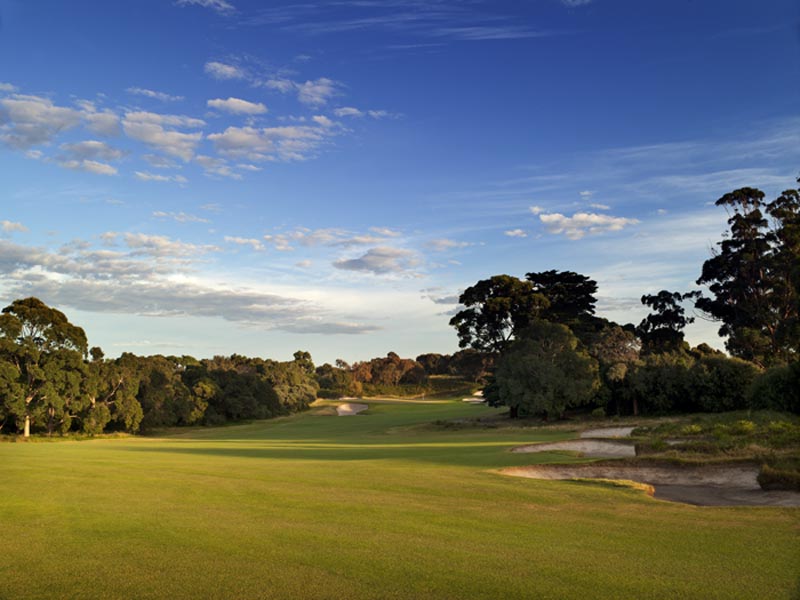 Royal Melbourne West Course Hole 6
Royal Melbourne West Course Hole 6
Hole seven is a short iron uphill par 3 to a heavily bunkered, heavily contoured green.
The green is partially blind from the tee below, and the hole is exposed to the wind making it a challenge to select the correct club, as well as intended line and flight.
The bunker short right dominates the view from the tee encouraging the unwary to stray left and long. But with a bunker at the back, and a steep back to front tilt to the green, there is no easy way to par this hole.
Hole 10 is a driveable short par 4 hole.
These days the longest hitters can take on the green with a 3 wood, but to do so they must carry over all types of nasty vegetation and then the biggest bunker on the course, in search of a tiny green protected by steep drop offs and more bunkering at the rear.
Played as a long iron or rescue off the tee, hole 10 can be then approached with a wedge or short iron from a much more friendly angle.
But that approach does need to be reasonably accurate given the size and firmness of the green. It is an exciting hole no matter which way you play it.
The East Course
The East Course opened in 1932.
Designed by Alex Russell with Mick Morcom again in charge of construction, The East Course traverses less undulating terrain than it's older sister, but has the same iconic green and bunker complexes.
In recent years the club has employed Tom Doak to modify the design.
My favourite holes would be the long par 5 seventeenth hole which meanders along the course boundary dodging bunkers left and right, and the absolutely classic par four closing hole with its stadium finish.
The green is surrounded by a sea of bunkers, and different pin positions will dictate the best line of approach.
The hole doglegs from right to left and requires a long accurate tee shot to hit the fairway and a steely nerve to find the green surface.
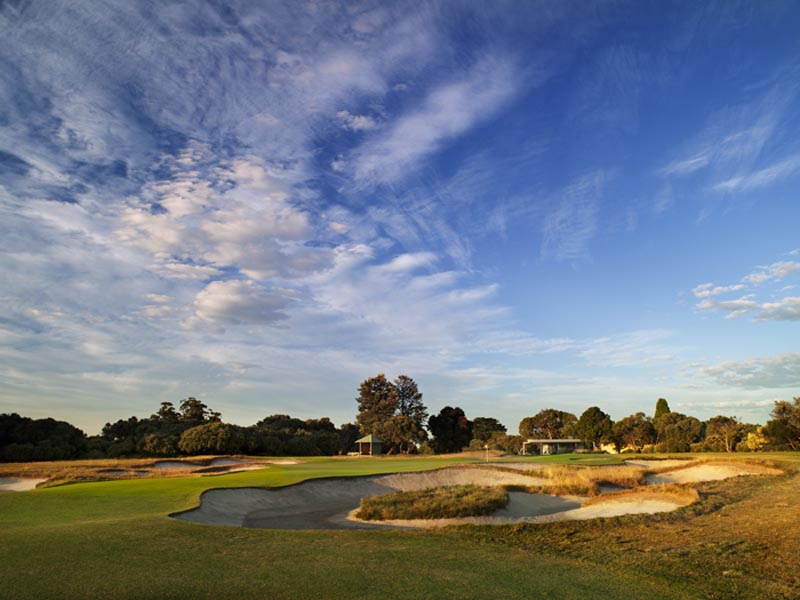 Royal Melbourne East Course Hole 18
Royal Melbourne East Course Hole 18
The Composite Course
The Composite Course has been in operation since 1959, albeit in slightly different combinations. Up until 2011, 21 holes had been used.
The most recent routing used was 3W, 4W, 5W, 6W, 7W, 10W, 11W, 12W, 17W, 18W, 1E, 2E, 3E, 16E, 17E, 1W, 2W.
This was given to me on a hand drawn note from long time manager and all round gentleman, Paul Rak.
Sadly Paul passed away a few years ago and will be sorely missed.
Championships
Royal Melbourne has hosted a significant number of Australian and International events including 16 Australian Opens, 13 Australian PGA's, The Australian Masters, the Johnnie Walker Classic, The Chrysler Classic, The Bicentennial Classic, The Coca Cola Classic and more...
And international events such as The Presidents Cup, The Canada Cup (now The World Cup ), The World Cup, and The Eisenhower trophy have been played on that wonderful composite course.
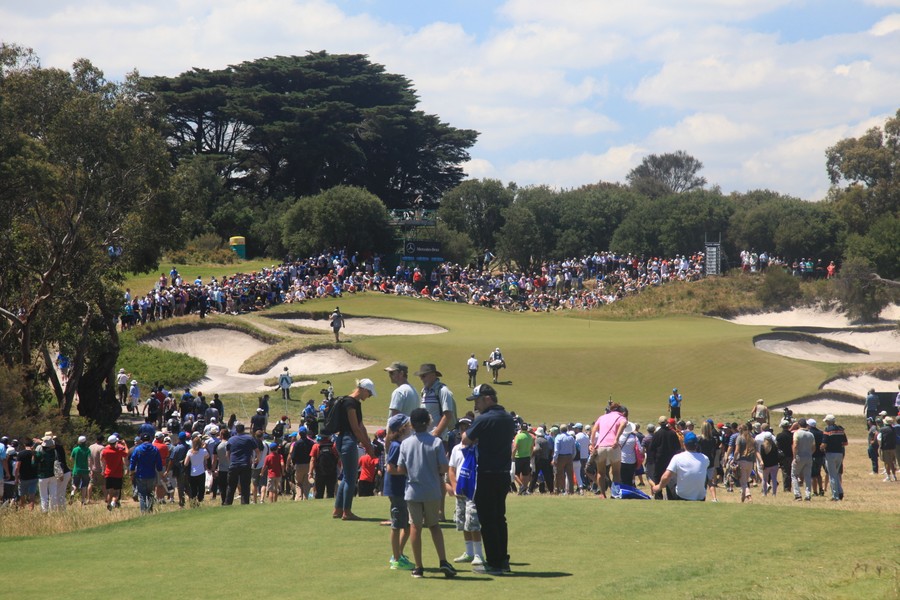 The Australian Masters at Royal Melbourne
The Australian Masters at Royal Melbourne
Royal Melbourne GC is a Travelling Golfer 'must play'
The Melbourne Sandbelt
The Melbourne Sandbelt comprises eight wonderful courses all located in close proximity to each other in the south eastern suburbs of Melbourne.
Most of these courses have featured in world top 100 ratings over the years, and all have firm fast greens and wonderful bunkering.
Courses include: Kingston Heath, Victoria, Metropolitan, Yarra Yarra, Commonwealth, Huntingdale & Woodlands
Golf Tours
The Travelling Golfer can tailor a Golf Tour to The Melbourne Sandbelt to suit the requirements of your group.
And why not consider adding a few days at King Island or Barnbougle?
Enquiries
For further information please enquire here:

